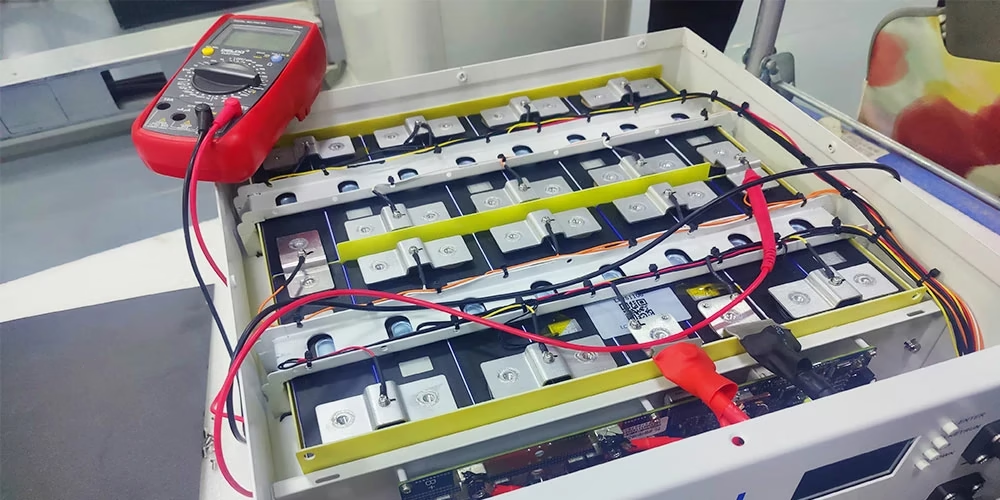A BMS, short for Battery Management System, lithium battery BMS is the built-in electronic control unit inside every battery pack.
It relies on sensors and microchips to keep constant watch over the battery’s vital signs, managing its core parameters to ensure safe operation, improve efficiency, and extend its useful life as much as possible.
In a home energy storage setup, the BMS essentially serves as the communication bridge linking the battery cells to external devices—including inverters and user interfaces.

➡️Core Functions of a lithium battery BMS
We can break down the role of a BMS into three main areas:
Protection and Safety (Primary Responsibility)
This function forms the foundation of the lithium battery BMS—it’s absolutely vital, as it directly impacts the safety of people and property.
- Overcharge Protection: Once the battery reaches full charge, the BMS steps in to disconnect the charging circuit, stopping any further current flow. This prevents voltage from rising to dangerous levels that could potentially cause a fire or explosion.
- Over-Discharge Protection: When the battery’s energy runs low, the BMS interrupts the discharge path. Doing this protects the battery from the severe damage and permanent failure that deep discharging can cause.
- Overcurrent Protection: When power load or battery voltage suddenly rises—such as when multiple high-power appliances start at once—the BMS limits or cuts off the current to prevent overheating or circuit damage.
- Short-Circuit Protection: In case of an accidental short circuit, the BMS immediately cuts off the circuit to avoid catastrophic failure.
- Temperature Monitoring and Management: The BMS continuously monitors the temperature of the battery pack. If temperatures get too high—during summer heat or under high current demand, for example—it activates cooling systems or reduces power output. In cold conditions, such as winter, it may restrict charging (since charging at low temperatures can severely damage lithium batteries) or even activate heating to keep the battery operating within its ideal temperature range.
In cold conditions, such as winter, it may restrict charging (since charging at low temperatures can severely damage lithium batteries) or even activate heating to keep the battery operating within its ideal temperature range.

Status Monitoring and Information Exchange (Intelligent Management)
The lithium battery BMS informs both you and the system about the battery’s “health status.”
- State of Charge (SOC) Estimation: This refers to the remaining battery capacity, similar to the battery percentage on a phone. Using sophisticated algorithms, the BMS estimates and reports the remaining power in real time, giving you a clear picture of your energy usage.
- State of Health (SOH) Evaluation: This indicates the battery’s aging level. It tells you the actual remaining capacity compared to the original—for example, a battery health of 90%—helping you decide whether maintenance or replacement is needed.
- Data Communication: Using standard communication protocols like CAN bus and RS485, the BMS maintains constant data exchange with inverters, home energy management systems, and even your smartphone app. This allows you to monitor real-time parameters—voltage, current, power, temperature, and state of charge—while also receiving immediate alerts if any faults occur.
Control and Optimization (Performance Enhancement)
The lithium battery BMS doesn’t just monitor—it actively takes part in system operation to enhance overall performance.
- Power Control: By continuously tracking the battery’s charge level and temperature, the BMS works in sync with the inverter to adjust charge and discharge power in real time. As a result, the system remains secure while the battery operates at peak efficiency.
- Lifespan Extension: We use intelligent charging methods to reduce wear on the battery, such as avoiding keeping it fully charged for long stretches. Pair this with careful heat regulation and keeping all cells in balance, and you get a battery pack that lasts considerably longer.

